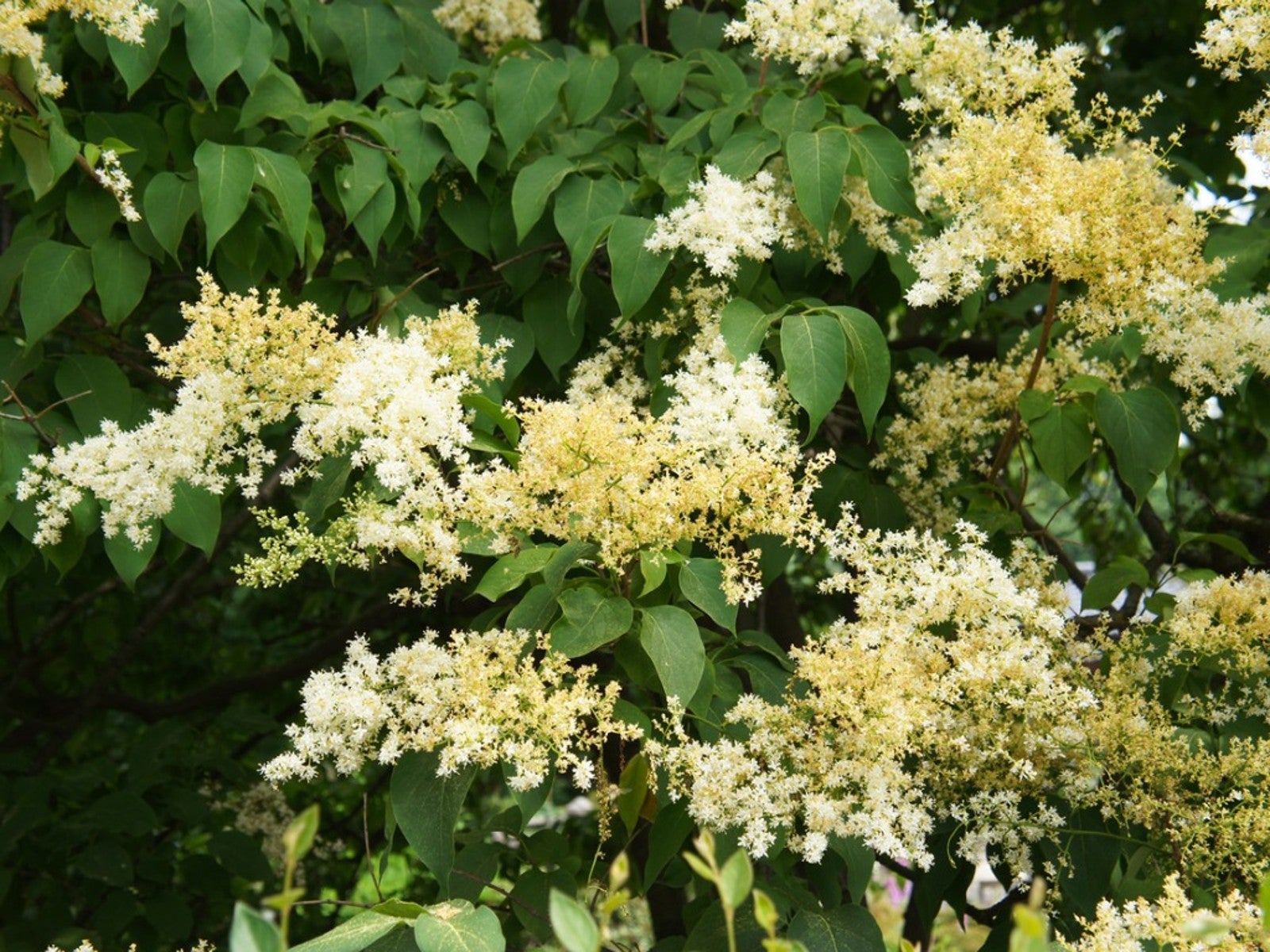Japanese Lilac Information: What Is A Japanese Lilac Tree


A Japanese tree lilac (Syringa reticulata) is at its best for two weeks in early summer when the flowers bloom. The clusters of white flowers are about a foot (31 cm.) long and 10 inches (25 cm.) wide. Though they don't have the heady scent of traditional lilacs, they do have a pleasant fragrance. The plant is available as a multi-stemmed shrub or a tree with a single trunk. Both forms have a lovely shape that looks great in shrub borders or as specimens.
Growing Japanese lilac trees near a window allows you to enjoy the flowers and fragrance indoors, but make sure you leave plenty of room for the tree's 20 foot (6 m.) spread. After the flowers fade, the tree produces seed capsules that attract songbirds to the garden.
What is a Japanese Lilac Tree?
Japanese lilacs are trees or very large shrubs that grow to a height of up to 30 feet (9 m.) with a spread of 15 to 20 feet (4.5-6 m.). The genus name Syringa means pipe, and refers to the plant's hollow stems. The species name reticulata refers to the network of veins in the leaves. The plant has a naturally attractive shape and interesting, reddish bark with white markings that give it year-round interest.
The trees bloom in clusters that are about 10 inches (25 cm.) wide and a foot (31 cm.) long. You might be reluctant to plant a flowering tree or shrub that takes up so much space in the garden and only blooms for two weeks, but the timing of the blossoms is an important consideration. It blooms at a time when most spring-bloomers are through for the year and summer-bloomers are still budding, thus filling in a gap when few other trees and shrubs are in flower.
The care of the Japanese lilac tree is easy because it maintains its lovely shape without extensive pruning. Grown as a tree, it only needs an occasional snip to remove damaged twigs and stems. As a shrub, it may need renewal pruning every few years.
Additional Japanese Lilac Information
Japanese tree lilacs are available as container grown or balled and burlapped plants at local garden centers and nurseries. If you order one by mail, you will probably get a bare root plant. Soak bare root trees in water for a few hours and then plant as soon as possible.
These trees are very easy to transplant and rarely suffer transplant shock. They tolerate urban pollution and thrive in any well-drained soil. Given a location in full sun, Japanese tree lilacs seldom suffer from insect and disease problems. Japanese tree lilacs are rated for USDA plant hardiness zones 3 through 7.
Sign up for the Gardening Know How newsletter today and receive a free copy of our e-book "How to Grow Delicious Tomatoes".

Jackie Carroll has written over 500 articles for Gardening Know How on a wide range of topics.